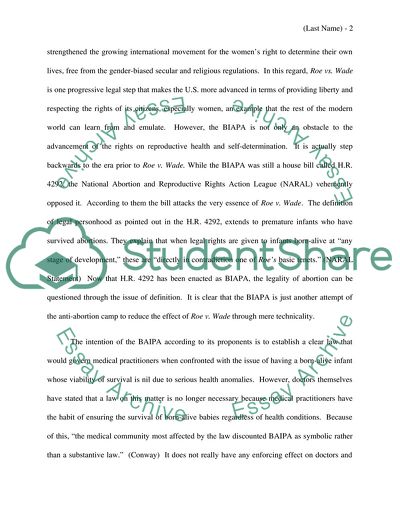Cite this document
(“Born-Alive Infants Protection Act (2002) Should be repeale Research Paper”, n.d.)
Born-Alive Infants Protection Act (2002) Should be repeale Research Paper. Retrieved from https://studentshare.org/miscellaneous/1572838-born-alive-infants-protection-act-2002-should-be-repeale
Born-Alive Infants Protection Act (2002) Should be repeale Research Paper. Retrieved from https://studentshare.org/miscellaneous/1572838-born-alive-infants-protection-act-2002-should-be-repeale
(Born-Alive Infants Protection Act (2002) Should Be Repeale Research Paper)
Born-Alive Infants Protection Act (2002) Should Be Repeale Research Paper. https://studentshare.org/miscellaneous/1572838-born-alive-infants-protection-act-2002-should-be-repeale.
Born-Alive Infants Protection Act (2002) Should Be Repeale Research Paper. https://studentshare.org/miscellaneous/1572838-born-alive-infants-protection-act-2002-should-be-repeale.
“Born-Alive Infants Protection Act (2002) Should Be Repeale Research Paper”, n.d. https://studentshare.org/miscellaneous/1572838-born-alive-infants-protection-act-2002-should-be-repeale.


